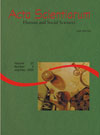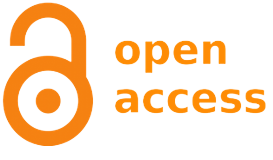<b>The inclusion of blind children in physical education classes: Difficulties and opportunities</b> - DOI: 10.4025/actascihumansoc.v27i2.204
Abstract
Inclusion has the purpose of building a society capable of promoting the socialization and social participation of all citizens. Blindness brings a relevant loss of information for the visually impaired. This loss, reduces the opportunities that blind people may have to interact with the environment and the people around them. Our study consists of a bibliographic review on inclusion from 1990 to 2004. The authors’ main ideas from the most important research work in the area were collected, analyzed and turned into a useful tool for physical education teachers that deal with this special group. physical education classes may provide the inclusion of the visually impaired throughout flexible activities. Nevertheless, teachers insist on having negative attitudes which are consequences of their lack updating in training. 7.08.00.00-6 EducaçãoDownloads
Download data is not yet available.
Published
2007-11-13
How to Cite
Alves, M. L. T., & Duarte, E. (2007). <b>The inclusion of blind children in physical education classes: Difficulties and opportunities</b> - DOI: 10.4025/actascihumansoc.v27i2.204. Acta Scientiarum. Human and Social Sciences, 27(2), 231-237. https://doi.org/10.4025/actascihumansoc.v27i2.204
Issue
Section
Philosophy and Education
DECLARATION OF ORIGINALITY AND COPYRIGHTS
I Declare that current article is original and has not been submitted for publication, in part or in whole, to any other national or international journal.
The copyrights belong exclusively to the authors. Published content is licensed under Creative Commons Attribution 4.0 (CC BY 4.0) guidelines, which allows sharing (copy and distribution of the material in any medium or format) and adaptation (remix, transform, and build upon the material) for any purpose, even commercially, under the terms of attribution.
Read this link for further information on how to use CC BY 4.0 properly.























